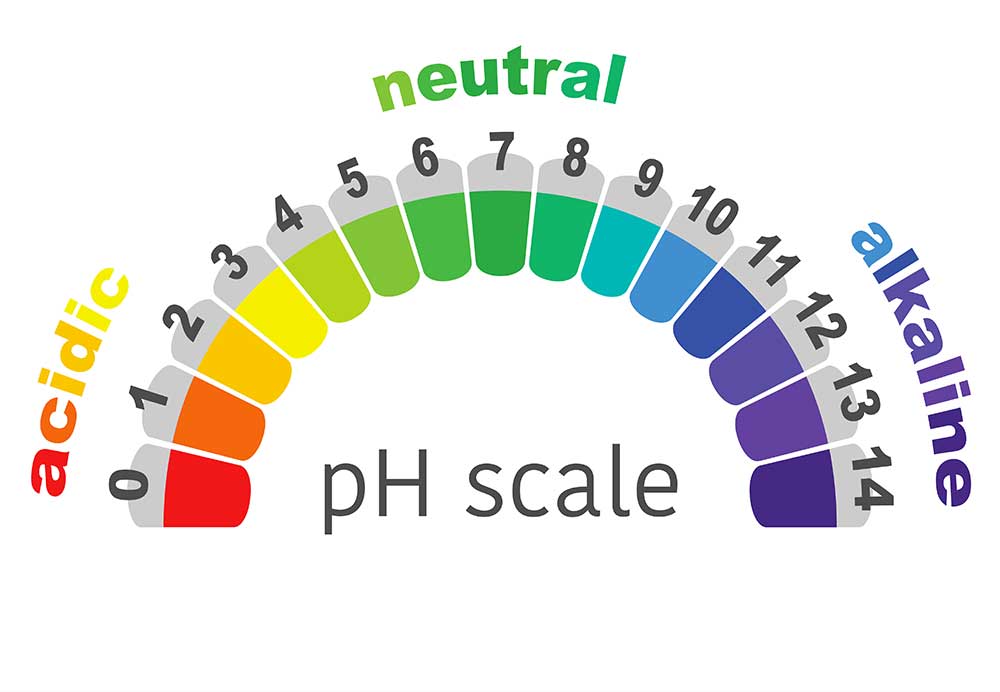Right pH Level in Drinking Water – How Essential?
Though people have become conscious about purifying the tap water and make it suitable for drinking, very few consider that safe water is more than just purification. All of us have heard the term “pH Level”, but hardly anyone knows what exactly it means. In accurate terms, pH stands for potential hydrogen. And when we talk about pH in water, we refer to how much hydrogen is mixed with the water. Water with a well-balanced pH level is essential for both health and practical reasons. Let’s check out how.
What is pH Level?
A pH level, with its scale ranging from 0 to 14, is a measurement of acid-base equilibrium in different kinds of substances including water. With 7.0 being the normal pH level, a pH below 7 is considered acidic whereas anything above 7 is considered to be alkaline (basic). If a pH of 0 refers to the most acidic level with more hydrogen ions, the most basic level with more oxygen ions is suggested by a pH of 14. Foods like yoghurt, cheese or fish are more acidic, while vegetables like carrots, bell peppers and kale are alkaline.
What Is the Right pH for Drinking Water?
According to the studies, water with a pH level between 6 and 8.5 is safe to consume as it is neither acidic nor alkaline enough to be harmful for our body. Water, with a pH below 6, can be acidic and filled with toxic metals; while water with a pH above 8.5 can be hard and taste bad, leaving scale deposits on dishes, sinks, plumbing fixtures and more. It is very important to check the pH level in drinking water as drinking acidic water can result in various problems, such as, weight gain, low immunity and vulnerability to diseases.
What is the pH Level of Tap Water?
Freshwater pH differs throughout the world depending on weather conditions, human activities, and natural processes. The normal range for pH in surface water systems is around 6.5 to 8.5, and the pH range for groundwater systems is between 6 and 8.5. The pH level of tap water is affected by factors, like the composition of a particular area’s bedrock, presence of chemicals or cleaning agents in water and the processes undertaken by municipal corporations to treat the water. The water that you get in your tap must fall in the “safe” pH range of 6.5 to 8.5.
General Water pH levels
| Type of Water | pH Level |
| Tap Water | Differs; usually about 7.5 |
| Distilled RO Water | 5 to 7 |
| Common Bottled Water | 6.5 to 7.5 |
| Bottled Water labeled as Alkaline | 8 to 9 |
| Ocean Water | About 8 |
| Acid Rain | 5 to 5.5 |
Disadvantages and Advantages of Water with Different pH Levels
Water with low pH levels is acidic and can lead to blue or green stains on drains and sinks, while the water with high pH is alkaline and can lead to scaling in plumbing fixtures. Alkaline water also makes it difficult to lather soaps and detergents. High pH water tastes bitter and has a slippery feel. On the other hand, low-pH water may have a metallic taste, and result in fixture corrosion. In fact, according to newer studies, alkaline water is said to have several benefits, including neutralizing acid in the body, leading to enhanced oxygen levels in the blood, improving metabolism, rejuvenating skin, protecting bones and such others. However, these benefits have not been proven.
Conclusion
In succinct terms, pH is a measurement of electrically charged particles in a substance and an indicator of how acidic or alkaline is that substance. Pure water, which is rarely available, has the right pH level of 7. It is considered “neutral” since it has neither acidic nor basic qualities. In the present day, it is not feasible to get access to pure water. But with a water purifier like that of Havells, you can get safe and healthy water which is the outcome of 8-stage process with 100% RO and UV purification. Moreover, this water is fortified with minerals while maintaining the adequate pH balance. So, without any delay, get a Havells water purifier and enjoy immediate access to safe and healthy drinking water.

